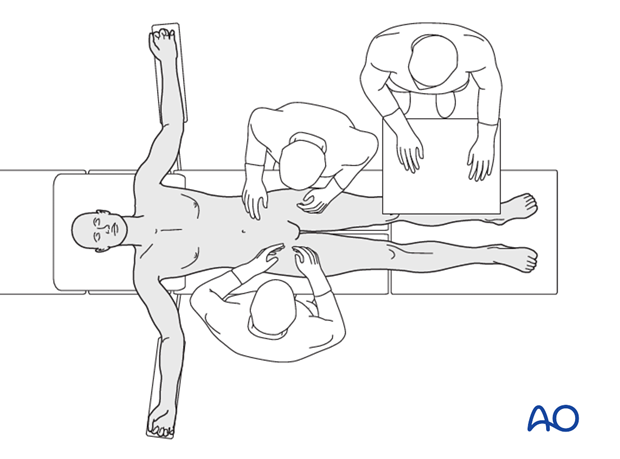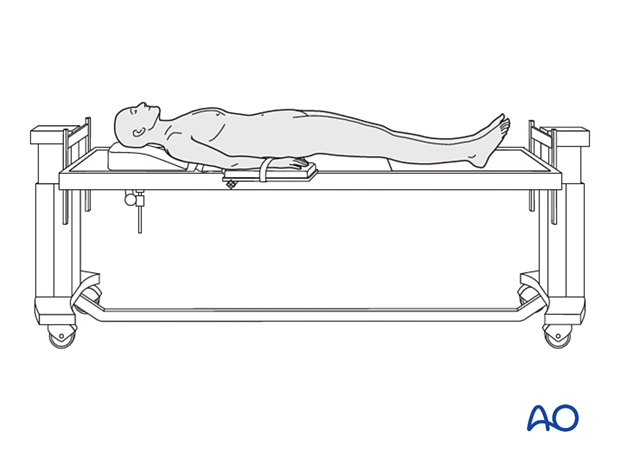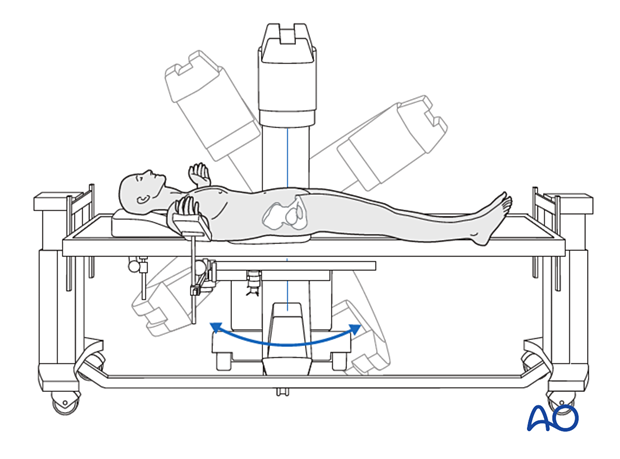Supine position for approaches to T1–S5
1. Patient positioning
The patient is placed on a radiolucent table in a supine position.
A urinary catheter should be inserted before beginning the procedure.

A pillow to flex the hip can help to relax the neurovascular structures and iliopsoas muscle if desired for the anterior pelvic approach. All pressure points should be padded.
For upper thoracic approaches, arms should be placed alongside the body.

2. Anesthesia
General anesthesia with endotracheal intubation is required.
A pulse oximeter should be placed on the left great toe.
3. Preoperative antibiotics
Antibiotics should be administered well before the incision and at intervals during the procedure or when the blood loss exceeds 2 liters.
A cephalosporin antibiotic with good Gram-positive coverage is generally recommended.
4. Spinal cord monitoring
Spinal cord monitoring is recommended when spinal cord compression or manipulation is anticipated.
5. Fluoroscopy
Preoperative fluoroscopy is mandatory. Before draping, one should ensure that both AP and lateral fluoroscopy views are possible with the C-arm. Once the patient is positioned, the sacrum is checked with the image intensifier to ensure it is seen clearly in both AP and lateral planes.














